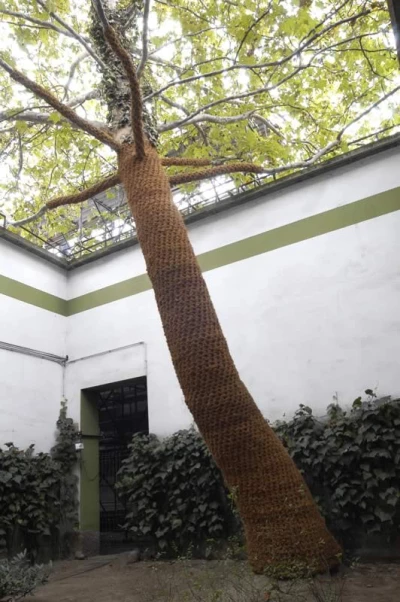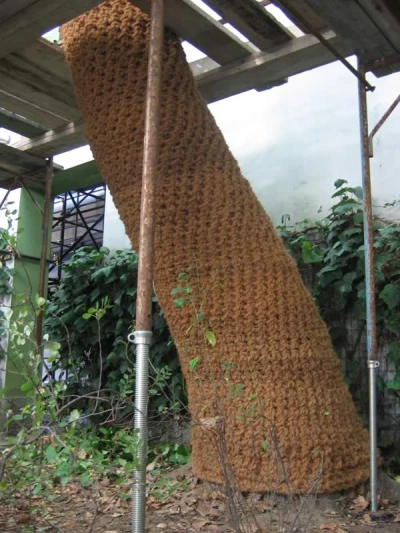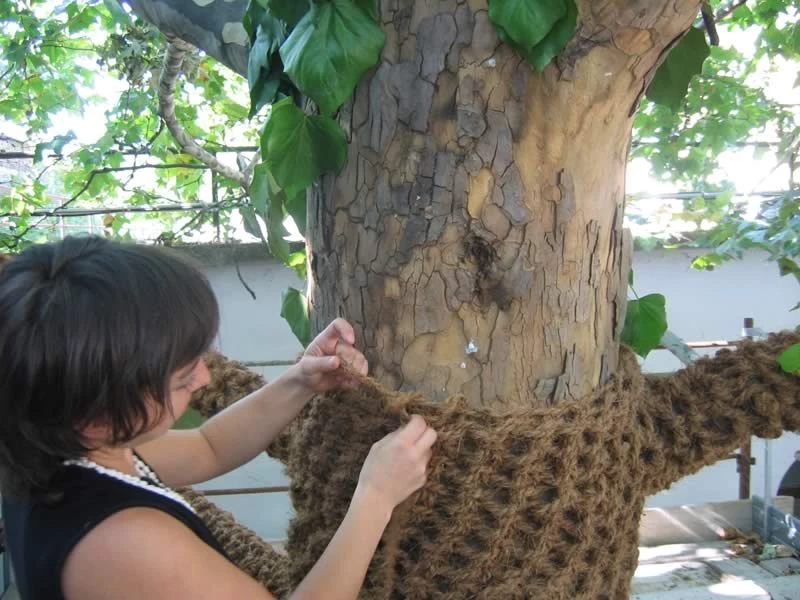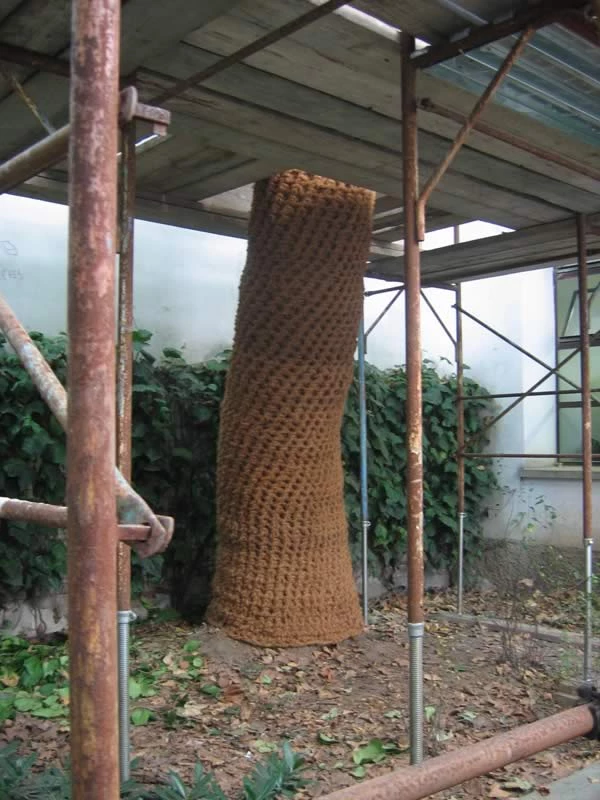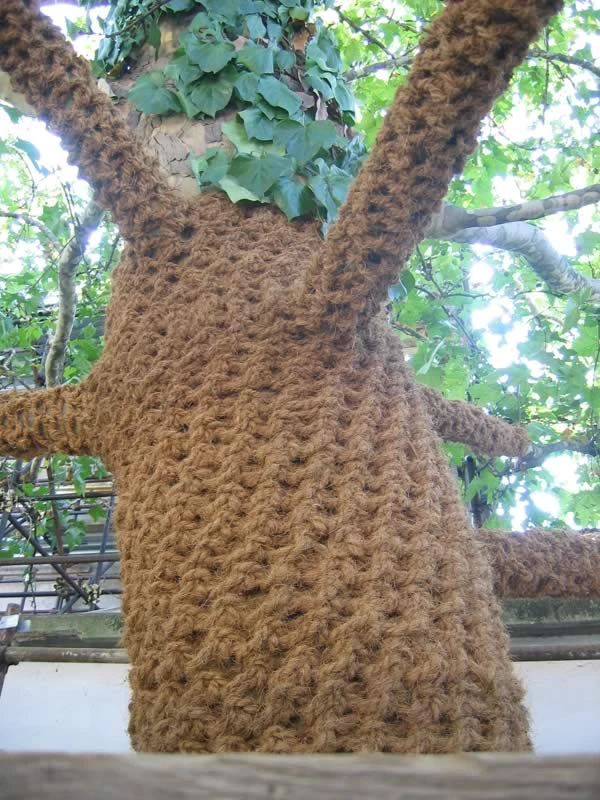Emilia Scharfe • Funambolo
A large and very tall plane tree grown in a small courtyard of the building that houses C/O careof, its presence vital and powerful, yet harmonious, its magnificent architecture, the strong trunk, the stretched branches, the bark animated by a shifting, emotional coloration. Emilia Scharfe wanted to encircle this tree with a protective, assertive gesture; she wanted to embrace it, to take possession of it. Following the joy of the vision came a project that translated into a demanding task: by weaving 2000 meters of coconut rope, the artist wrapped the tree in a specially woven net, like a kind of second skin.
The material with which she dressed it is organic, fibrous, the color warm and natural; the technique used is the ancient one of crochet, a quintessentially female activity, a traditional, simple practice tied to meticulous manual skill, to the skilled and patient gesture, to attention and concentration; all characteristics that the crochet technique retained in this work by Emilia Scharfe, but added to the effort required by the transition from thin thread to coconut rope, normally used in agriculture, and from the micro scale of typical domestic enclosure work to the macro scale of an artwork of environmental proportions. The work developed slowly. The dense weave that Emilia Scharfe created ended up wrapping the trunk and branches up to a height of several meters. In close contact with the tree, after days and days of work, the artist knotted the rope following its sensuous shape. Dressing it meant entering into resonance, traversing and exploring it, as if to know its irregularities, its physical form, to discover its knots and curves. It was a tiring but also poetic process, which allowed her to experience the relationship with the tree in its fullness. A slow process, as important in itself as the result achieved. The outcome is a caressing garment that follows its shapes, a protective armor, a binding embrace, a straitjacket that constrains.
The use of weaving and sewing, not new for Emilia Scharfe, can be understood in this case as capable of conveying the slow but steady development of the tree and, more generally, the long times of nature and formative, cognitive, relational processes. But also as a metaphor for the intertwining of different realms of nature, the human and the vegetal.
Circling around the tree to cover it with rope loop after loop also expresses the concentricity of the rings produced in the trunk by growth and indicates its age. The work is ephemeral: made of organic material and left to the mercy of the weather, it is destined to deteriorate until exhaustion, embracing the temporality inherent to life.
Dressed, bound but certainly not tamed, the tree will continue to grow nonetheless. And its second bark, once enveloping, will sooner or later become too tight. Then a struggle will begin. The awareness of the provisional nature of this state of grace and of the tension that will arise induces a vague sense of tension; the same that animates many works by Emilia Scharfe: soft objects but somehow cruel, garments to wear but also traps that cage and constrain. Funambolo is a living work although static, mimetic although sculptural, monumental, yet far from any rhetoric.
Gabi Scardi
